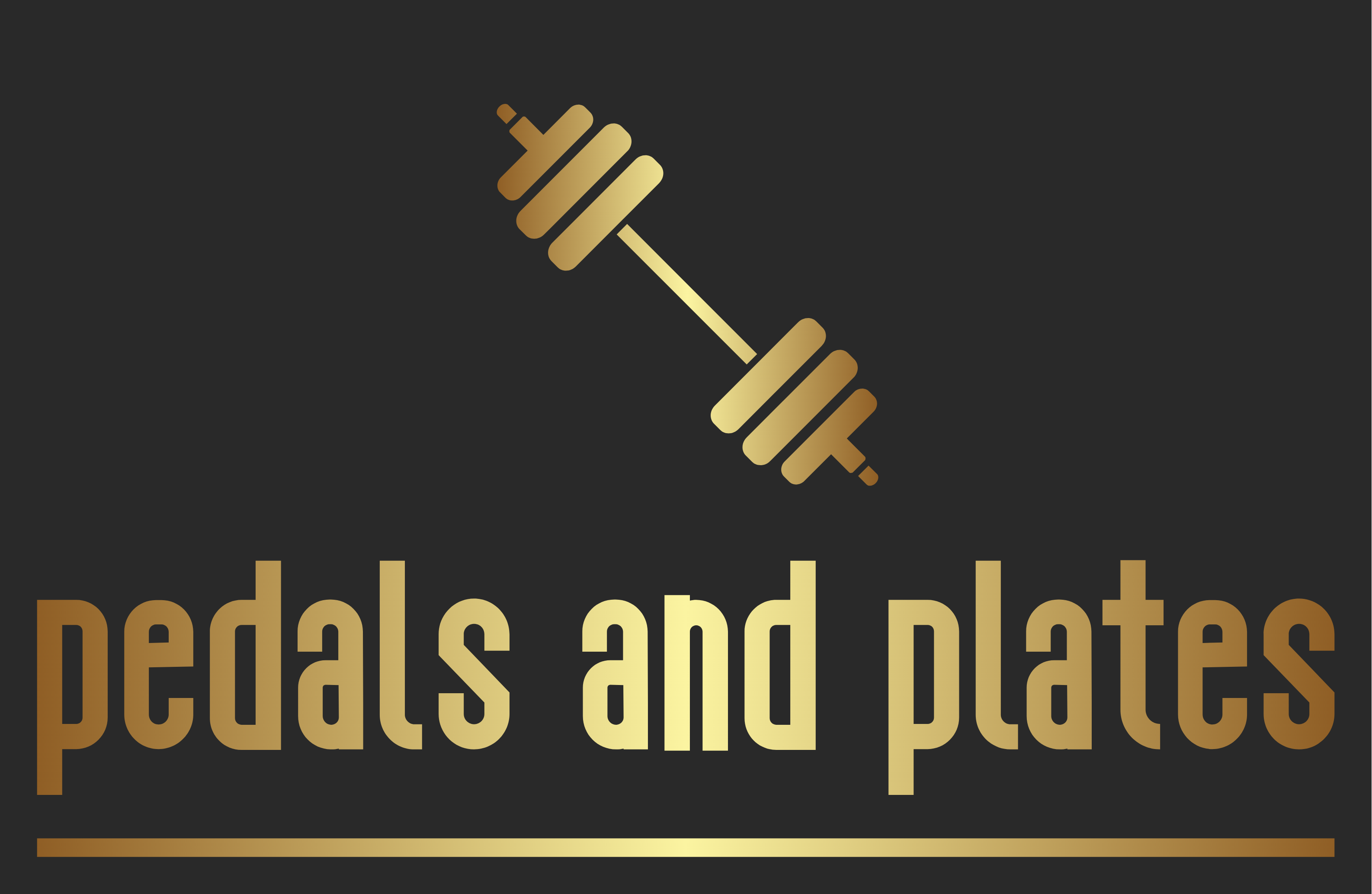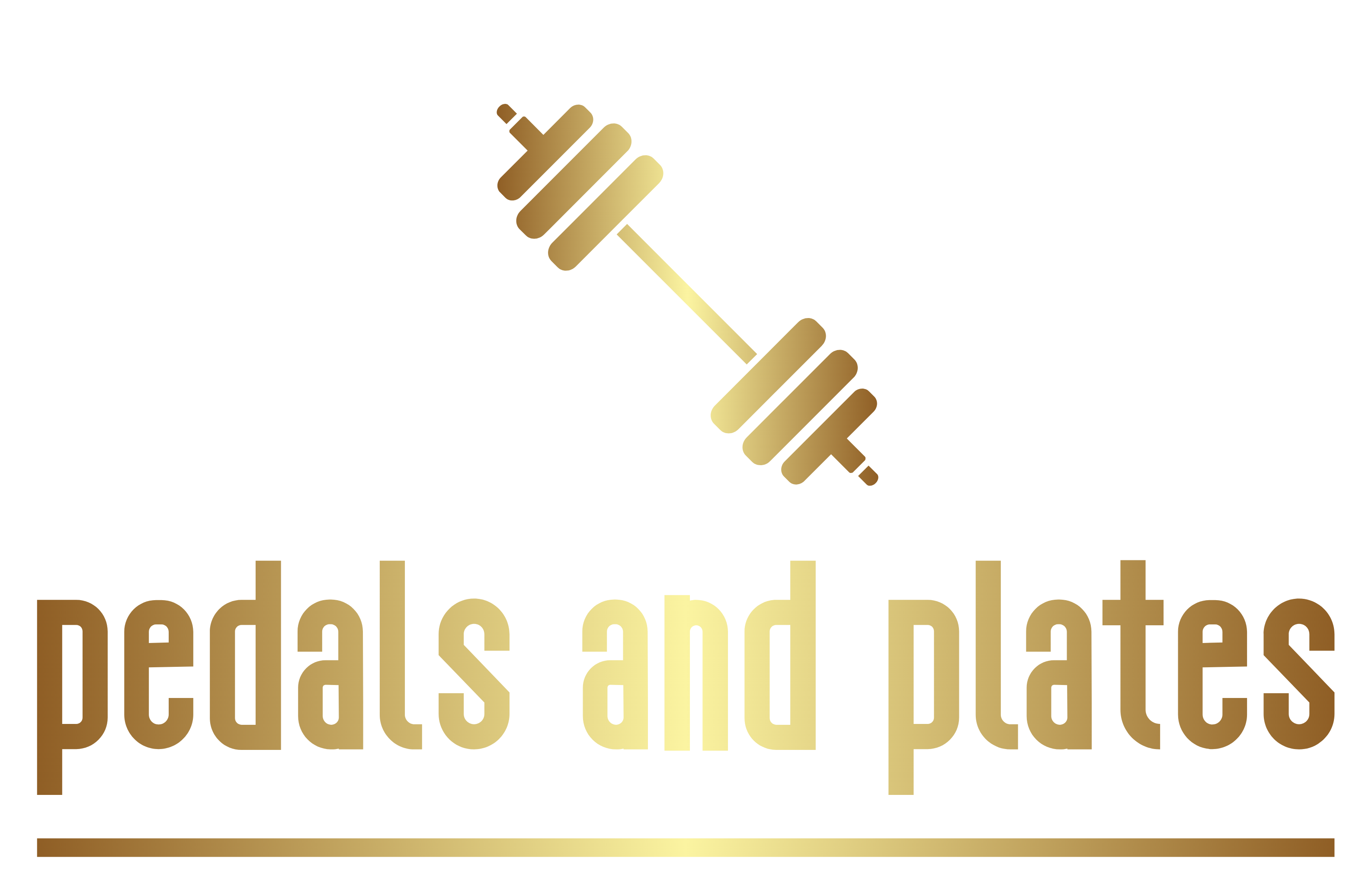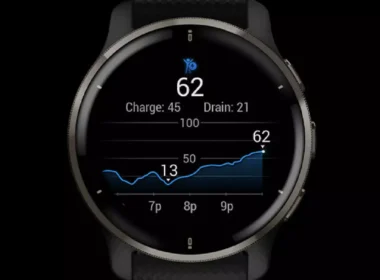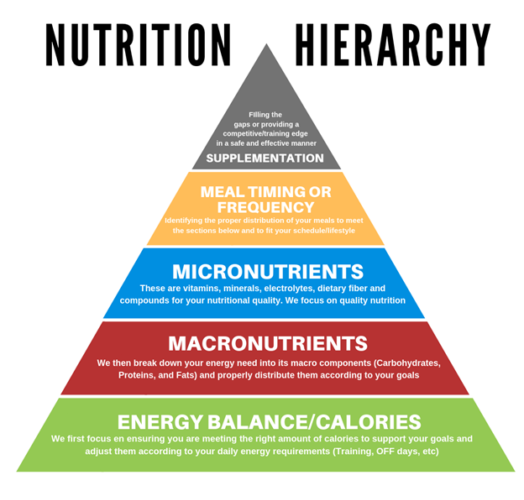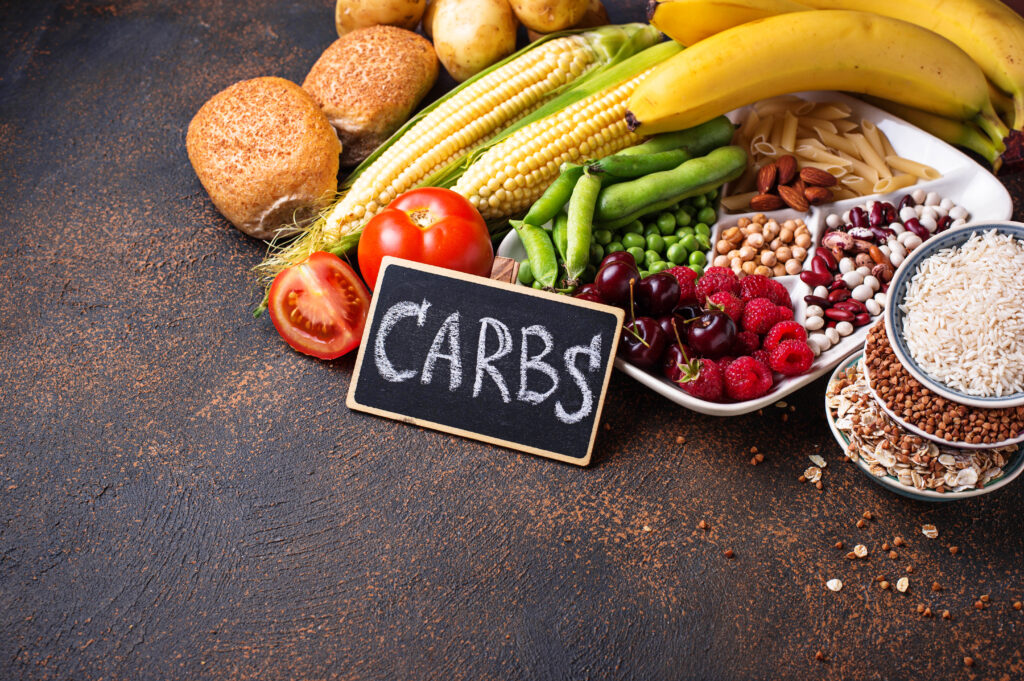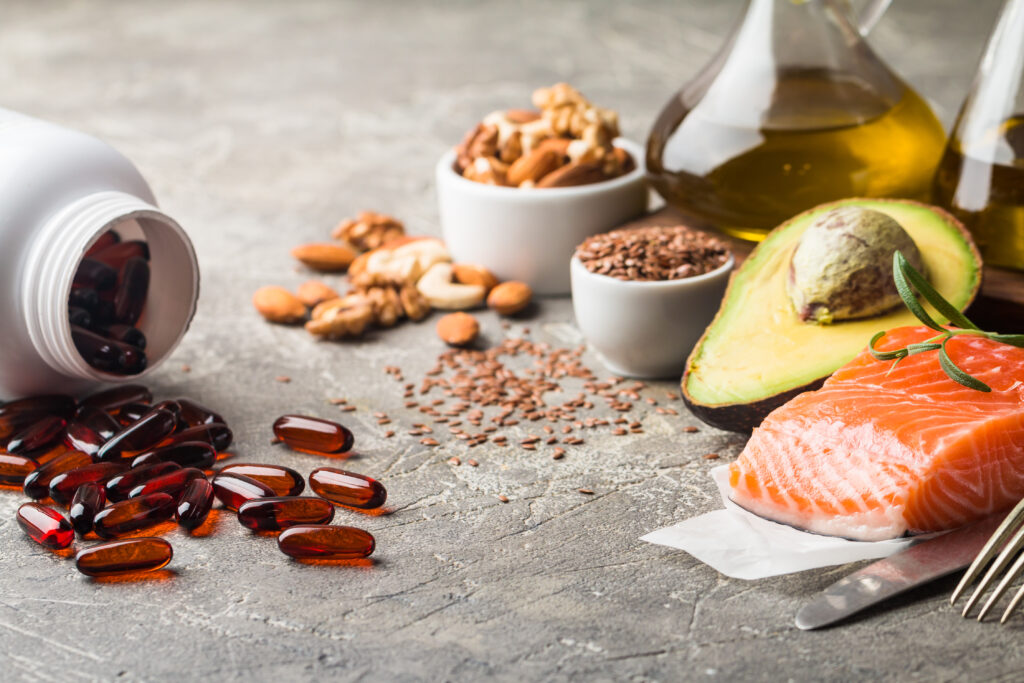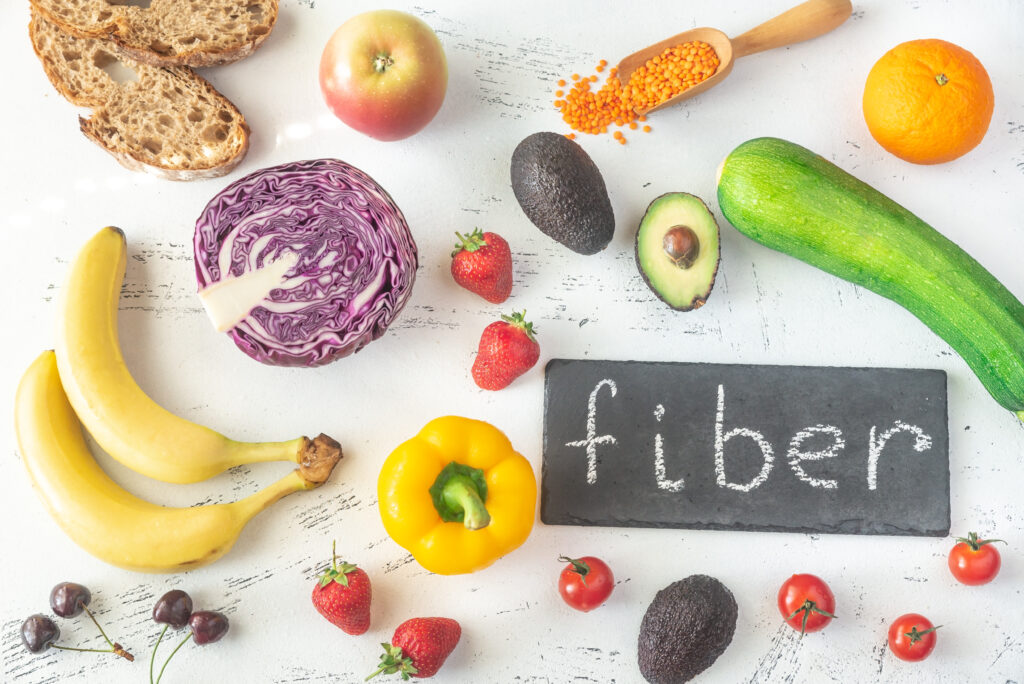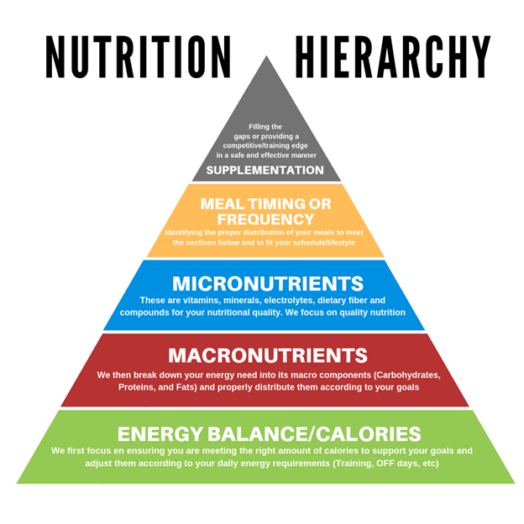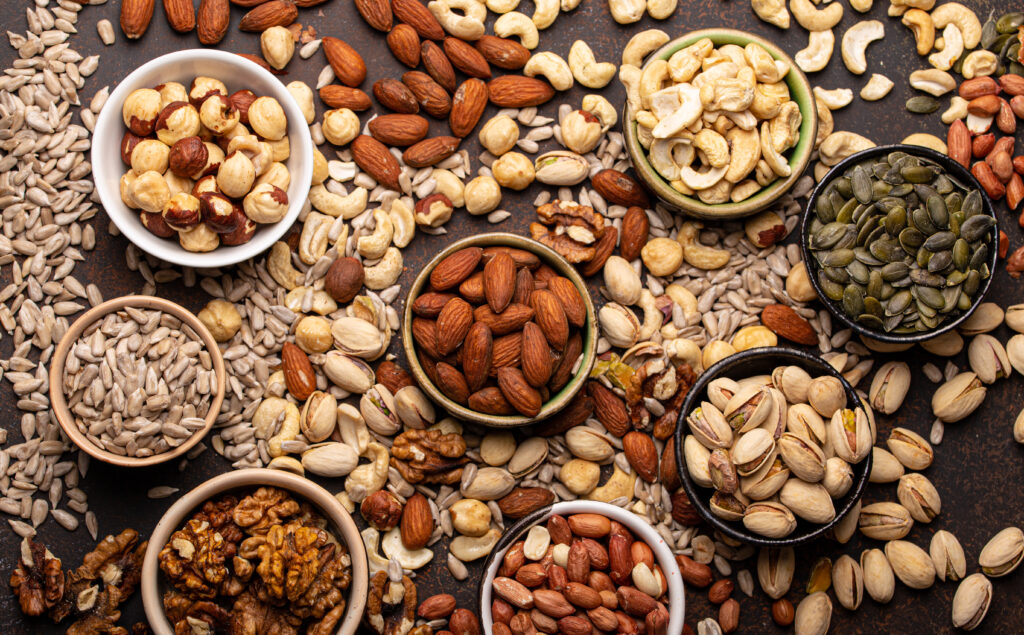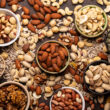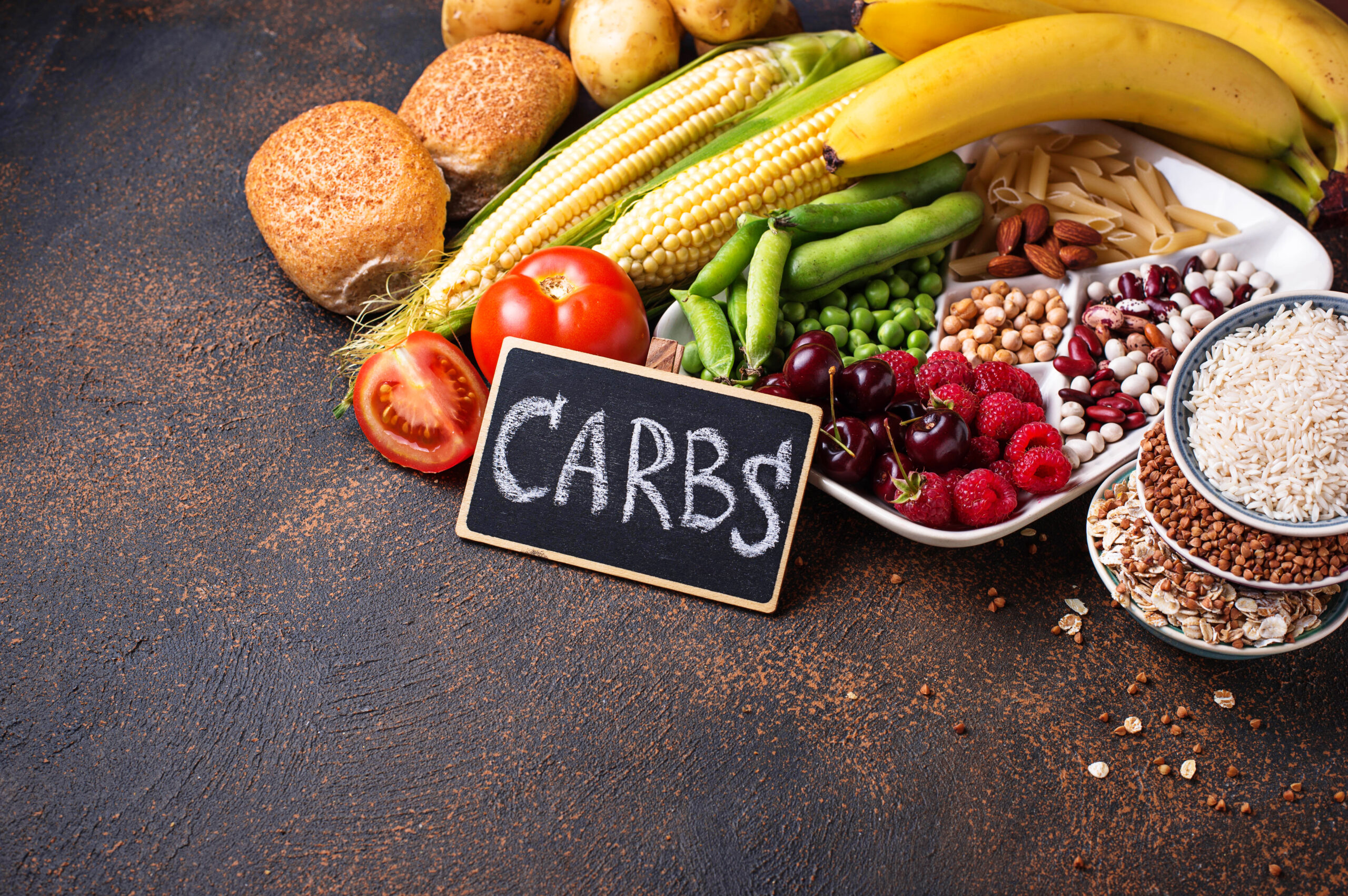Achieving fat loss and muscle growth goals can be challenging and confusing, especially with abundant conflicting information about nutrition online. However, understanding the importance of nutrition is crucial in reaching these fitness goals. It is about hitting the gym, working out hard, and fueling your body with the proper nutrients for fat loss and muscle growth. This article will delve into the nutritional hierarchy of importance for fat loss and muscle growth, prioritizing key factors such as calorie intake, macronutrient ratios, and nutrient timing. By focusing on these essential factors, readers can make informed decisions and optimize their nutrition to achieve their desired results.
Jump to...
Section I: Calories
Calories are the fundamental units of energy that fuel the body’s functions, including physical activity and muscle repair. The appropriate amount of calories needed is crucial for achieving fitness goals, and it depends on various factors, such as age, gender, weight, and activity level.
The Formula
Determining the number of calories needed for fat loss can be done using the Total Daily Energy Expenditure (TDEE) formula. The formula considers a person’s Basal Metabolic Rate (BMR), the number of calories burned at rest, and their daily activity level to estimate the total number of calories needed to maintain their current weight. Individuals can achieve fat loss by creating a calorie deficit by reducing calorie intake or increasing activity levels. However, if available, having a Resting Metabolic Rate test done in a lab or fitness studio is ideal for determining TDEE.
Right Amount
On the other hand, for muscle growth, individuals need to consume more calories than the body burns [2], resulting in a calorie surplus. This surplus gives the body the necessary energy to build new muscle tissue and support muscle repair. However, consuming too many calories can lead to weight gain, so balancing calorie intake and activity levels are crucial to ensure healthy muscle growth.
Section 2: Macronutrient Ratios
The macronutrient ratio is the next key factor in the nutritional hierarchy of importance for fat loss and muscle growth. While caloric intake is vital, the source of those calories is equally important. A well-rounded diet consisting of the three macronutrients – carbohydrates, proteins, and fats – is crucial for overall health and optimizing gym performance.
Protein
When it comes to weight loss goals, a caloric deficit is essential. However, it is also important to maintain enough protein intake to preserve muscle mass while losing body fat. Generally, consuming 1.2 grams to 1.6 grams of protein per pound of lean muscle mass is recommended to achieve this goal.
Carbohydrates
On the other hand, for muscle growth goals, a calorie surplus is necessary. A higher intake of calories provides energy to fuel muscle growth. In this case, a higher intake of carbohydrates is also recommended to ensure enough energy for intense workouts.
Not all carbohydrates are equal in terms of their nutritional value. While whole grains, vegetables, and plant-based foods are healthy sources of carbohydrates that provide essential nutrients and fiber, diets high in refined sugars can lead to weight gain and increase the risk of health issues like cancer. It’s vital to ensure adequate fiber intake, which is found in plant-based foods like fruits, vegetables, whole grains, nuts, and seeds. Diets rich in fiber can help regulate digestion, promote healthy bowel movements, and reduce the risk of chronic diseases such as heart disease, diabetes, and certain types of cancer. Incorporating fiber-rich foods into your diet can promote optimal health and well-being while reducing the risk of health issues associated with a high intake of refined sugars.
Fats
Similarly, not all fats are bad. Healthy fats found in foods like olive oil, sunflower seeds, and dairy products are essential for a well-rounded diet. Saturated fats in animal sources should be limited, as higher intake has been linked to a higher risk of breast cancer and other health issues.
While counting calories and macronutrient ratios is essential, it’s also vital to consider nutrient timing. The fitness and supplement industries often tout the benefits of nutrient timing and intermittent fasting for fat loss and muscle growth, but research is inconclusive. Generally, it makes sense to space out meals throughout the day to keep the central nervous system and metabolic rate functioning optimally.
Macronutrient ratios are crucial in achieving fat loss and muscle growth goals. A well-rounded diet with enough protein, healthy fats and carbohydrates from whole food sources is important for overall health and fitness. By considering the calorie deficit or surplus needed and the quality of the macronutrients consumed, readers can optimize their nutrition plan to reach their desired results.
Moving on to micronutrients, it’s also important to consider nutrient timing and its impact on fat loss and muscle growth goals.
Section 3: Micronutrients
Mmicronutrients are vital vitamins and minerals the body requires in small amounts to maintain optimal bodily functions. Despite being needed in small quantities, they play a critical role in various physiological and metabolic processes.
Micronutrient deficiencies are prevalent worldwide, affecting an estimated 2 billion people. Such defects may lead to severe health problems like cognitive impairment, anemia, and blindness. Many people turn to dietary supplements like AG1 Athletic Greens, which contains various essential vitamins, minerals, and other nutrients to avoid micronutrient deficiencies. Such supplements can promote optimal health and well-being, particularly for those struggling to meet their daily micronutrient requirements through diet alone.
It’s essential to remember that dietary supplements should not replace a balanced diet and a healthy lifestyle, which are the foundations of good nutrition. However, incorporating supplements can help ensure adequate micronutrient intake. Incorporating micronutrient-rich foods and supplements like AG1 Athletic Greens can promote optimal health and well-being.
Nutrient timing is essential in optimizing nutrition for fat loss and muscle growth, and it should be considered part of a comprehensive nutrition plan.
Section 4: Meal Timing and Frequency
Nutrient timing is crucial for optimizing nutrition for fat loss and muscle growth [1]. It involves consuming specific nutrients strategically at particular times to maximize their effectiveness. For instance, consuming protein shortly after a workout stimulates muscle protein synthesis and aids muscle recovery and growth [1].
Additionally, consuming carbohydrates before a workout provides the necessary energy for an intense workout while consuming them after a workout helps replenish glycogen stores in the muscles [1].Regarding optimizing nutrition for fat loss and muscle growth, meal timing and frequency are critical factors that should not be overlooked. The timing of meals and how often you eat can significantly impact your body’s ability to burn fat and build muscle.
Firstly, let’s discuss the role of meal timing in achieving fat loss and muscle growth. Eating regularly throughout the day can help maintain steady blood sugar levels, preventing hunger pangs and cravings that may lead to overeating. Additionally, consuming meals at specific times can help to synchronize the body’s internal clock, promoting more efficient energy utilization and metabolic function. For example, eating breakfast within an hour of waking up can help to kickstart your metabolism for the day, while having a small meal or snack before bed can help to prevent muscle breakdown overnight.

Moreover, pre and post-workout meals play a crucial role in muscle growth. Before a workout, consuming a balanced meal with carbohydrates and protein can provide the energy and nutrients needed for optimal performance. After a workout, a meal containing a higher protein to carbohydrates ratio can help promote muscle recovery and growth. This is because protein is essential for repairing and building muscle tissue, while carbohydrates help to replenish glycogen stores and support muscle growth.
On the other hand, intermittent fasting has gained popularity in recent years as a strategy for fat loss. Intermittent fasting involves cycling between periods of eating and fasting, typically in a daily or weekly pattern. Some potential benefits of intermittent fasting include improved insulin sensitivity, increased fat burning, and reduced inflammation. However, it’s important to note that intermittent fasting may not be suitable for everyone and should be approached with caution, particularly for individuals with certain medical conditions or a history of disordered eating.
In conclusion, meal timing and frequency are important factors when developing a nutrition plan to support fat loss and muscle growth. Eating at regular intervals and appropriately timing meals can help regulate hunger, maintain steady blood sugar levels, and optimize metabolic function. Additionally, pre and post-workout meals can be crucial in supporting muscle growth and recovery, while intermittent fasting may be a valuable strategy for those looking to reduce body fat. Ultimately, listening to your body and tailoring your nutrition plan to your needs and goals is essential.
Section 5: Supplements
Supplements can play a role in helping to achieve fat loss and muscle growth, but it is important to remember that they should not be used as a substitute for a healthy diet and exercise routine [1]. The most commonly used supplements for muscle growth and fat loss include creatine, caffeine, protein, and beta-alanine [2][3].
Creatine
Creatine is a molecule naturally produced in the body and is involved in producing muscle energy. It is one of the most well-researched supplements for muscle growth and has been shown to be effective in increasing muscle mass and strength and improving exercise performance. However, it is essential to note that excessive creatine intake can lead to adverse side effects such as kidney damage and dehydration [3].

Caffeine
Caffeine is a stimulant that is commonly found in many pre-workout supplements. It can help to improve exercise performance by increasing alertness and reducing feelings of fatigue. However, it is essential to note that excessive caffeine intake can lead to adverse side effects such as anxiety, insomnia, and dehydration [3].
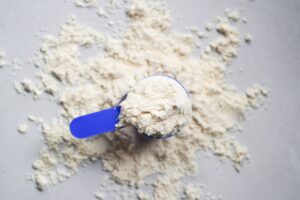
Protein supplements
Protein supplements, such as whey protein, are commonly used by athletes and bodybuilders to help build muscle mass. Protein is essential for muscle growth and repair, and supplements can help ensure that individuals meet their daily protein requirements. However, it is essential to remember that protein supplements should not substitute for a healthy, balanced diet [2].
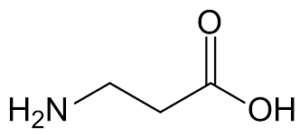
Beta-alanine
Beta-alanine is an amino acid involved in the production of carnosine, a molecule that helps reduce muscle fatigue during exercise. It improves exercise performance and increases muscle mass, but excessive intake can lead to adverse side effects such as tingling and numbness [3].
In conclusion, supplements can help achieve fat loss and muscle growth, but they should be used with a healthy diet and exercise routine. It is essential to be aware of the potential risks associated with supplement use and to use them in moderation and under the guidance of a healthcare professional.Wrap Up
Wrap Up
Achieving both fat loss and muscle growth goals is a challenging task that requires an understanding of the importance of nutrition. Nutrition plays a crucial role in achieving fitness goals; there is abundant conflicting information about it online. However, there are some essential factors to focus on, such as calorie intake, macronutrient ratios, and nutrient timing. To determine the number of calories needed for fat loss, one can use the Total Daily Energy Expenditure (TDEE) formula [1], which considers factors such as BMR, daily activity level, and age. When it comes to muscle growth, a calorie surplus is generally required, but it should not be excessive [6].
In addition to calorie intake, macronutrient ratios are also important for both fat loss and muscle growth. Protein plays a critical role in preserving and building muscle mass, and a higher protein intake is recommended for both fat loss and muscle growth [1][6]. Carbohydrates are also essential for providing energy during workouts and can be adjusted depending on one’s activity level [1][6]. Finally, healthy fats are essential for hormone production, energy, and overall health [1].
Nutrient timing, or when one consumes food, is also an essential factor. Consuming protein and carbohydrates before and after a workout can help with muscle repair and growth [1][6].
Overall, understanding the importance of nutrition and focusing on these essential factors can help individuals make informed decisions and optimize their nutrition to achieve their desired fitness results.
Reference Articles:
[1] “The bottom line. Body recomposition stresses the importance of gaining muscle while losing fat, which may decrease your risk of chronic disease and boost metabolism. Try increasing your protein …” URL: https://www.healthline.com/nutrition/body-recomposition [2] “Effect of diet-induced weight loss on muscle mass in persons with obesity. Weight loss, achieved through a calorie-reduced diet, decreases both fat and fat-free (or lean body) mass ( 44 – 46 ). In persons with normal weight, the contribution of fat-free mass loss often exceeds 35% of total weight loss ( 47, 48 ), and weight regain promotes …” URL: https://academic.oup.com/advances/article/8/3/511/4558114 [3] “Weight loss is most often a combination of losing fat, muscle, and glycogen stores (water weight). Ideally, most weight loss should come from fat loss (7, 8).To lose weight, you must achieve a …” URL: https://www.healthline.com/nutrition/does-fat-turn-into-muscle [4] “Slowing or reversing muscle loss — Researcher Nathan K. LeBrasseur, Ph.D., discusses the discovery that the growth and differentiation factor-8 functions as a potent negative regulator of muscle growth, and whether it can serve as a mediator of sarcopenia or cachexia and as a therapeutic target.” URL: https://www.mayoclinic.org/medical-professionals/physical-medicine-rehabilitation/news/slowing-or-reversing-muscle-loss/mac-20431104 [5] “But with the right supplement strategy, nutrition plan, and training program, you can change the way you look, feel, and perform. The Fat Loss Getting Shredded expert guide teaches you everything you need to know about losing body fat while maintaining muscle mass. Use this guide for your fat loss plan!” URL: https://www.muscleandstrength.com/articles/fat-loss [6] “Itll be harder to lose fat and keep muscle without adequate protein. Weight loss is a common goal, but what many people actually want is fat loss and muscle maintenance, thus changing body composition. Protein plays an important role in holding on to muscle while in a calorie deficit. Higher-protein diets for fat loss can also lead to more …” URL: https://www.insider.com/not-eating-enough-protein-fat-loss-goals-2021-8 [7] “The takeaway. Muscular hypertrophy can be achieved through weightlifting at the gym. But you need to continuously break down and challenge muscles in order to see growth. A protein-rich diet is …” URL: https://www.healthline.com/health/muscular-hypertrophy [8] “Month 2-3. You will reconsider your dieting strategy and opt for more sustainability. You will reintroduce bad foods in your diet that youve most likely blocked out in the first two weeks or month. Because balance (and not quitting your diet) is more important to you at this stage than seeing rapid weight loss.” URL: https://www.lifehack.org/801687/how-long-does-it-take-to-build-muscle [9] “In line with hormonal health, there is a negative dose-response relation between body fat percentage and fertility if your BMI is over 18.5. For a 21-year-old, the optimal fat level for fertility corresponds to a body fat percentage of just 10.7% for untrained men and 21.5% for women based on this. This estimate for fertility corresponds with …” URL: https://mennohenselmans.com/optimal-body-fat-muscle-growth/ [10] “Loss of muscle mass symptoms. Muscles. are vital to everyday function, and if you noticeably lose muscle mass — especially without knowing why — it can be frightening.. Losing some muscle mass is expected as you age. However, losing muscle mass rapidly, or atrophy, especially in the context of other symptoms, can indicate an underlying condition.Common accompanying symptoms of loss of …” URL: https://www.buoyhealth.com/learn/loss-of-muscle-mass
